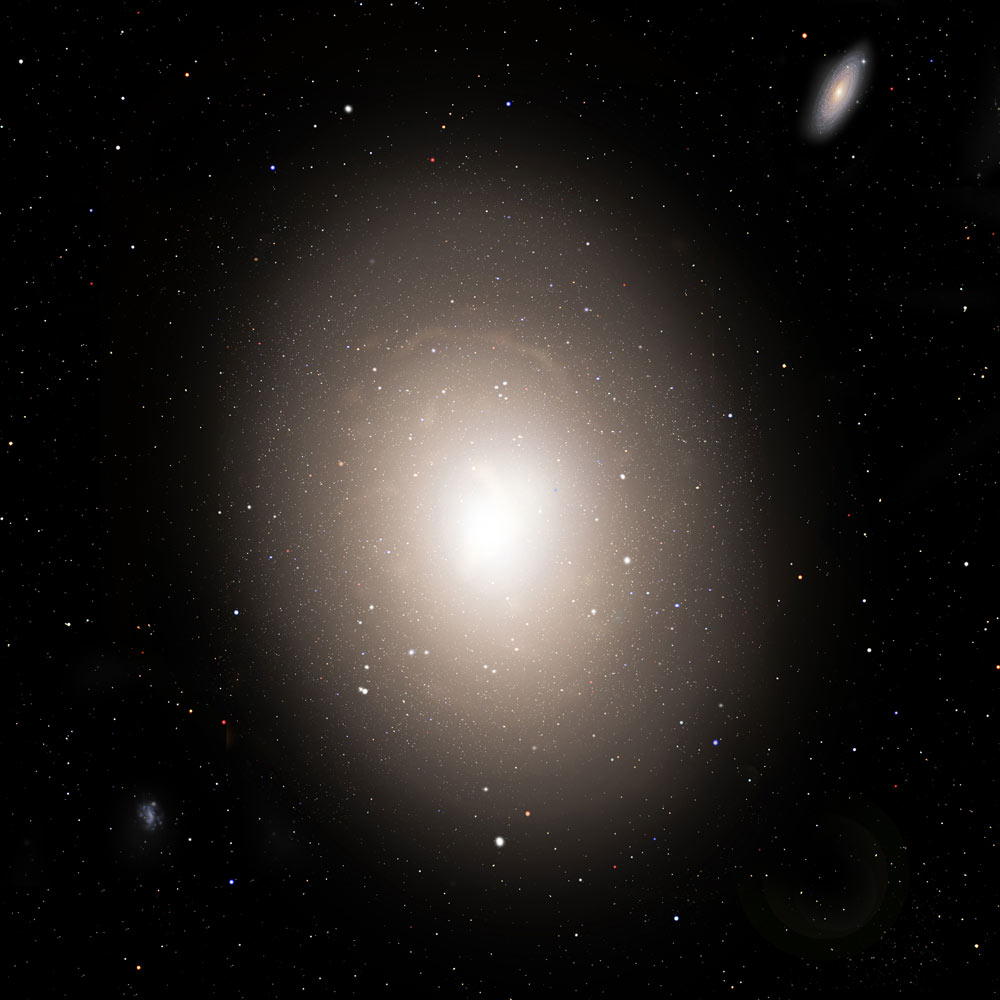Discovery May Triple the Number of Stars In the Universe

Stars known as red dwarfs might be far more common than previouslythought, enough to triple the total number of stars known in the universe,a new study suggests.
These new findings could also boost the number of planets thatcould harbor life, astronomers announced today (Dec. 1).
Red dwarfs are dim compared to stars such as our sun and just 10to 20 percent as massive. As such, astronomers could not detect them ingalaxies other than our Milky Way and its closest neighbors until now.
Now astronomers have used powerful scientific instruments on the W.M.Keck Observatory in Hawaii to detect the faint signature of red dwarfs in eightmassive so-called ellipticalgalaxies located between about 50 million and 300 million light-years away.
"It is remarkable that we can measure and quantify the lightof these incredibly feeble stars in galaxies outside of the Milky Way,"researcher Pieter van Dokkum, an astronomer at Yale University, told SPACE.com.
Ellipticalgalaxies are some of the largest galaxies in the universe. The largest of thesegalaxies were thought to hold more than 1 trillion stars (compared with the 400billion stars in our Milky Way). [Top 10Star Mysteries]
Thenew finding suggests there may be five to 10 times as many stars inside ellipticalgalaxies than previously thought, which would triple the total number of known starsin the universe, researchers said.
Breaking space news, the latest updates on rocket launches, skywatching events and more!
Thefinal, total tally for the numberof stars in the universe still remains murky, the scientists cautioned. Determiningthe total star population of the cosmos requires an accurate number forgalaxies as well, they added.
"It'sthis latter quantity that is quite uncertain. Nevertheless, best estimates arearound 100 sextillion ? a 1 with 23 zeros," van Dokkum said. "Our results wouldthen triple that number, but again, there's a large additional uncertaintyassociated with this estimate."
The researchers' computer models based on these findings suggest that reddwarfs are far more common than expected, with these galaxies each possessingroughly 20 times more red dwarfs on average than the Milky Way, said researcherCharlie Conroy, an astronomer at the Harvard-Smithsonian Center forAstrophysics.
"Theabundance of these stars is very surprising ? there are many more thanwe had expected," van Dokkum said.
All in all, red dwarfs could make up at least 80 percent of thetotal number of stars and at least 60 percent of all the mass found in stars.
"No one knew how many of these stars there were," vanDokkum said. "Different theoretical models predicted a wide range of possibilities,so this answers a longstanding question about just how abundant these starsare."
These findings suggest that galaxies might contain less of themysterious substance labeled "dark matter" than before thought.Instead, red dwarfs could contribute more mass than realized.
"We need to revise current estimates of the masses and starformation activity of nearby and distant galaxies," van Dokkum said.
Moreover, the increased number of red dwarfs means there couldincrease the number of planets orbiting stars, which in turn boosts the numberof potentiallyhabitable planets.
To date, astronomers have discovered just over500 alien planets around other stars.
"There are possibly trillions of Earths orbiting thesestars," van Dokkum said. He added that the red dwarfs they discovered,which are typically more than 10 billion years old, have been around longenough for complex life to evolve. "It's one reason why people areinterested in this type of star."
Van Dokkum and Conroy detail their findings in theDec. 2 issue of the journal Nature.
- Top 10 Star Mysteries
- Does the Universe Have an Edge?
- Old Galaxy Still Giving Birth to Baby Stars

Charles Q. Choi is a contributing writer for Space.com and Live Science. He covers all things human origins and astronomy as well as physics, animals and general science topics. Charles has a Master of Arts degree from the University of Missouri-Columbia, School of Journalism and a Bachelor of Arts degree from the University of South Florida. Charles has visited every continent on Earth, drinking rancid yak butter tea in Lhasa, snorkeling with sea lions in the Galapagos and even climbing an iceberg in Antarctica. Visit him at http://www.sciwriter.us
